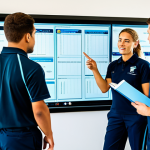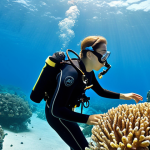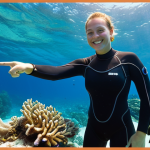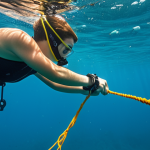Honestly, I still vividly recall the sheer thrill—and let’s be real, a touch of panic—when I first embarked on my journey to become a diving instructor.
The practical sessions felt like a blur of endless skills and scenarios, each one demanding pinpoint precision. You quickly realize that navigating this intense training without a robust, reliable checklist isn’t just difficult; it’s practically impossible, and frankly, a recipe for overlooking something vital.
I’ve seen firsthand how a comprehensive checklist transforms that initial chaos into clear, actionable steps, building not just competence but genuine confidence.
In an era where dive safety protocols are constantly evolving and environmental stewardship is paramount, staying ahead of the curve means embracing every tool at your disposal.
From mastering intricate rescue techniques to adapting to the latest advancements in dive computer technology and even the emerging trends in underwater tourism, the demands on an instructor are always expanding.
This isn’t just about passing a course; it’s about forging capable, future-ready dive professionals who can adapt to a dynamic underwater world. Let’s explore this precisely.
Honestly, I still vividly recall the sheer thrill—and let’s be real, a touch of panic—when I first embarked on my journey to become a diving instructor.
The practical sessions felt like a blur of endless skills and scenarios, each one demanding pinpoint precision. You quickly realize that navigating this intense training without a robust, reliable checklist isn’t just difficult; it’s practically impossible, and frankly, a recipe for overlooking something vital.
I’ve seen firsthand how a comprehensive checklist transforms that initial chaos into clear, actionable steps, building not just competence but genuine confidence.
In an era where dive safety protocols are constantly evolving and environmental stewardship is paramount, staying ahead of the curve means embracing every tool at your disposal.
From mastering intricate rescue techniques to adapting to the latest advancements in dive computer technology and even the emerging trends in underwater tourism, the demands on an instructor are always expanding.
This isn’t just about passing a course; it’s about forging capable, future-ready dive professionals who can adapt to a dynamic underwater world. Let’s explore this precisely.
The Unseen Craft of Pre-Dive Preparation
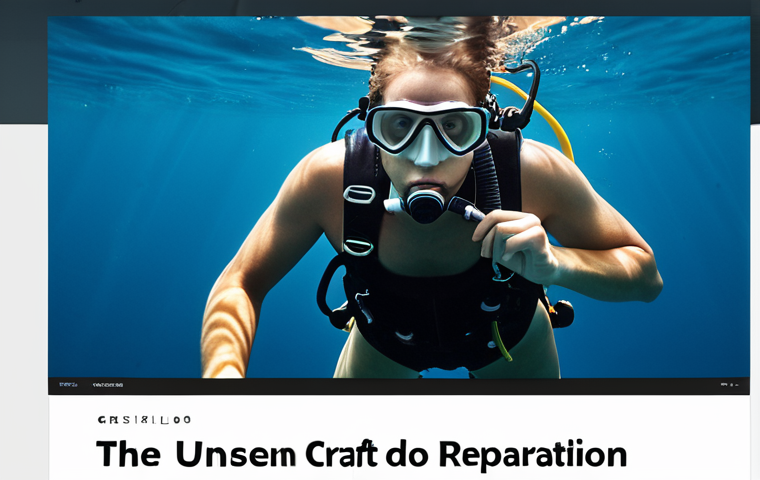
I recall vividly my early days, grappling with the sheer volume of pre-dive checks. It wasn’t just about ticking boxes on a generic list; it was about internalizing each step, understanding its criticality, and often, adapting it on the fly.
The air wasn’t always perfectly calm, the boat wasn’t always perfectly stable, and divers, well, divers are delightfully unpredictable. This pre-dive phase, often overlooked by students eager to just jump in, is where an instructor truly earns their stripes.
It’s the silent ballet of gear checks, briefing refinements, and subtle psychological assessments that sets the stage for a flawless, safe, and profoundly enjoyable dive experience.
I’ve seen countless times how a hurried or incomplete pre-dive routine can escalate minor issues into significant problems underwater, creating unnecessary stress for everyone involved.
Trust me, the calm confidence radiating from an instructor who has meticulously prepared is palpable, and it cascades down to their students, transforming apprehension into excitement.
It’s an art form, really, a blend of technical mastery and intuitive understanding, a cornerstone of professionalism that I carry into every single dive I lead.
The Indispensable Gear Audit: Beyond the Visual Check
When I teach new instructors, I always emphasize that a gear audit isn’t just about visually confirming equipment is present. It’s a multi-sensory experience: listening for leaks, feeling for worn hoses, even smelling for unusual odors that might indicate a problem.
I once had a student whose BCD inflator hose was subtly kinked inside its sleeve, something a quick glance would never catch. Only by manipulating the hose and feeling the restricted airflow did we catch it.
Imagine that problem at 60 feet! That incident solidified my belief that a comprehensive gear check involves more than just a quick glance. It’s about ensuring every single piece of equipment, from the primary regulator to the smallest buckle on a fin strap, is not only present but fully functional and optimally configured for the specific dive plan and environmental conditions.
This includes confirming tank pressure, checking for proper weight distribution, ensuring all connections are secure, and verifying secondary air sources are easily accessible and working.
We even go as far as doing a mini-breathing test on all regulators – feeling the resistance, listening for any strange sounds. This isn’t paranoia; it’s proactive safety, instilled through meticulous repetition and an understanding that even the smallest malfunction can compromise a dive and, more importantly, a life.
Briefing Mastery: Tailoring Communication for Every Group
I’ve learned that a dive briefing isn’t a monologue; it’s a dynamic conversation, a chance to gauge understanding and address anxieties before they ever become issues.
My first few briefings were stiff, recited from memory, and frankly, a bit boring. It took me years to truly understand how to read a room, to see the nervous glances or the overconfident smirks, and to tailor my tone and content accordingly.
Now, I always start by asking about previous experiences, current comfort levels, and any specific concerns. Are they new divers anxious about currents?
Experienced divers perhaps a little too relaxed? Each group, each individual even, requires a unique approach. It’s about breaking down complex dive plans into digestible chunks, using vivid descriptions to paint a picture of the underwater world they’re about to enter, and clearly outlining emergency procedures without causing undue alarm.
I use humor where appropriate, share personal anecdotes of challenges overcome, and always, always invite questions, no matter how trivial they might seem.
A well-delivered briefing isn’t just informative; it’s reassuring, building a foundation of trust that is absolutely vital for a successful and enjoyable dive.
It creates a shared mental model of the upcoming experience, which is indispensable for safety and enjoyment.
Mastering the Art of Emergency Response
The moment a real emergency happens, it’s not about what you remember from a textbook; it’s about muscle memory, instant decision-making, and the quiet confidence that comes from countless repetitions in simulated scenarios.
I remember a particularly challenging rescue drill where a student panicked, bolting to the surface without an exhale. My heart hammered, but years of training kicked in.
I ascended with them, forcing air out of their lungs, all while maintaining eye contact and a calm demeanor. It wasn’t pretty, but it was effective. That experience cemented my belief that an instructor must be a master of emergency response, not just theoretically, but physically and mentally.
This mastery goes beyond merely knowing the steps; it involves anticipating potential problems, recognizing subtle cues of distress, and having the tools and presence of mind to act decisively under pressure.
It’s about being the calm in the chaos, the steady hand when everyone else is feeling overwhelmed.
Swift Water Rescue Protocols: When the Unexpected Strikes
When it comes to swift water rescue, my personal experience has taught me that the environment itself becomes the greatest variable, and you learn to respect its raw power.
It’s not just about a simple tow; it’s about understanding hydraulics, planning for downstream hazards, and executing precise entries and exits from potentially dangerous currents.
I’ve been in situations where a strong rip current threatened to pull a less experienced diver out to sea, and relying solely on standard open water rescue techniques would have been futile.
Instead, years of specific training on managing currents, using appropriate equipment like rescue lines and flotation devices, and understanding how to establish effective communication in a noisy, turbulent environment became paramount.
We regularly practice techniques for breaking free from entanglements, managing unconscious divers in moving water, and coordinating with surface support.
It’s a specialized skill set that every dive instructor working in dynamic environments absolutely must possess, one that I continuously refine through workshops and practical drills because the ocean never stops teaching you new lessons.
Advanced First Aid and Oxygen Administration: The Crucial Minutes
I cannot stress enough the importance of being proficient in advanced first aid and oxygen administration. In the diving world, these aren’t just certifications; they are life-saving skills that you pray you never have to use but are profoundly grateful to possess when the moment arrives.
I vividly recall a time when a diver surfaced exhibiting clear signs of decompression sickness—a sudden joint pain, dizziness, and mottled skin. The quick, decisive action of providing 100% oxygen and properly positioning them, while simultaneously calling emergency services and coordinating evacuation, made all the difference.
Those initial minutes, before professional medical help arrives, are absolutely critical for mitigating damage and improving the outcome. My training included not just the theoretical knowledge of dive injuries but extensive hands-on practice with oxygen units, Automatic External Defibrillators (AEDs), and managing various trauma scenarios that might occur during a dive trip.
It’s not just about passing a course; it’s about being prepared to be a first responder, a guardian of health and safety, wherever your diving takes you.
Beyond Certification: Nurturing True Competence
Getting a certification card is just the beginning. I’ve found that the real magic happens in the subtle nuances, the ‘aha!’ moments where a student truly grasps a concept, not just performs a skill.
My teaching philosophy shifted dramatically when I stopped focusing solely on passing requirements and started focusing on building genuine, deep-seated competence.
This means understanding individual learning styles, patiently addressing anxieties, and knowing when to push a student and when to hold back. It’s about building confidence one successful breath, one clear mask, one perfect buoyancy check at a time.
I’ve had students who struggled immensely with mask clearing, almost giving up. By breaking it down, practicing in shallow water, and giving them the space and encouragement to fail safely before succeeding, I’ve seen them transform from timid novices into confident underwater explorers.
This personalized approach isn’t just good teaching; it’s essential for creating safe, responsible divers who will continue to enjoy the sport for years to come.
Cultivating Buoyancy Mastery: The Cornerstone of Control
If there’s one skill I pound into my students, it’s buoyancy control. It’s the absolute cornerstone of being a good diver, and it’s where I spend a huge amount of my instructional time.
I remember how frustrating it was for me initially, constantly bouncing off the bottom or struggling to stay at depth. It felt like an endless battle against gravity.
But once you master it, the underwater world literally opens up to you. It’s not just about adding or removing air from your BCD; it’s a delicate dance of breath control, weight distribution, and trim.
I break it down into tiny steps: feeling the sensation of neutral buoyancy, understanding how lung volume affects position, and making micro-adjustments.
I use visual cues, often encouraging students to imagine themselves as a perfect, streamlined fish, effortlessly gliding through the water. It’s a skill that requires patience and practice, but the payoff is immense: less air consumption, better interaction with marine life (without touching it!), and a far more graceful, enjoyable dive.
I teach my students to ‘think buoyancy’ with every fin kick and every breath.
Instilling Environmental Stewardship: Diving with Purpose
As dive instructors, we are uniquely positioned to be ambassadors for the ocean. I’ve always felt a deep personal responsibility to not just teach diving but to instill a profound sense of environmental stewardship in every student I certify.
It goes beyond the basic “don’t touch” rule. It’s about understanding marine ecosystems, recognizing the delicate balance, and actively participating in conservation efforts.
I share stories of coral bleaching, plastic pollution, and overfishing, not to scare them, but to inspire them. We discuss responsible diving practices, such as maintaining perfect buoyancy to avoid accidental contact with fragile corals, proper waste disposal, and even participating in local clean-up dives.
I encourage them to become citizen scientists, reporting unusual sightings or anomalies. My goal is for every student to emerge not just as a competent diver but as a passionate advocate for our planet’s most vital resource.
I believe that true competence as a diver includes an unwavering commitment to protecting the very environment that gives us so much joy.
Riding the Wave of Dive Technology and Trends
The world of diving is anything but static. When I first started, dive computers were luxury items, and navigating underwater often involved a compass, a depth gauge, and a good memory!
Now, we have integrated air-delivery systems, AI-powered computers, and rebreathers that extend bottom times far beyond what was once thought possible.
Frankly, it’s thrilling but also a bit overwhelming if you don’t keep up. My personal journey has involved constantly upgrading my own knowledge and equipment, seeing each new innovation not as a threat but as an opportunity to enhance safety and enjoyment.
This continuous learning curve is something I actively embrace and encourage in my fellow instructors and students. The best instructors aren’t just teaching what they learned years ago; they’re actively integrating the latest advancements into their curriculum, making sure their students are prepared for the diving world as it exists today, and where it’s heading tomorrow.
Leveraging Advanced Dive Computers for Enhanced Safety
I remember the initial skepticism some seasoned divers had about dive computers. “Just use your tables!” they’d scoff. But I’ve personally seen how these devices, when properly understood and utilized, dramatically enhance diver safety.
Modern dive computers do more than just track depth and time; they monitor ascent rates, track nitrogen loading across multiple dives, provide clear deco information, and even integrate air consumption data.
I make it a point to spend considerable time in my courses not just on *how* to use a dive computer, but *why* certain features are critical and how to interpret the data effectively.
We discuss different algorithms, setting conservative factors, and battery management. I emphasize that while these devices are incredibly smart, they are tools, and the diver is ultimately responsible.
My personal experience with them has shown that they significantly reduce the risk of decompression sickness when used correctly, and they allow for longer, safer multi-day diving.
It’s a game-changer that every modern diver, and especially every instructor, must fully comprehend.
Exploring the Niche Markets: Tech and Eco-Tourism
The diving industry is diversifying, and savvy instructors are exploring niche markets beyond traditional recreational diving. I’ve always had a keen interest in technical diving, pushing the boundaries of depth and time, and it’s a completely different mindset that requires rigorous training and specialized equipment.
Similarly, eco-tourism and conservation diving are booming. Divers don’t just want to see fish; they want to participate in marine conservation, learn about specific ecosystems, and make a positive impact.
I’ve found immense satisfaction in leading specialized trips focused on coral restoration or shark conservation, where the diving has a deeper purpose.
It requires different skills: an understanding of marine biology, specific project management, and the ability to articulate conservation messages effectively.
These emerging trends offer incredible opportunities for instructors to specialize, deepen their expertise, and create unique, impactful diving experiences that attract a whole new wave of enthusiasts.
It’s about finding your passion within diving and turning it into a thriving professional path.
Becoming a Guardian of the Underwater World
The moment I realized that being a dive instructor meant more than just teaching skills, that it entailed a profound responsibility for the very environment we explore, everything changed.
It’s not just about showing people beautiful reefs; it’s about making sure those reefs are still beautiful for generations to come. This shift in perspective, for me, has been one of the most rewarding aspects of my career.
I’ve seen firsthand the devastating impact of careless human activity, and conversely, the incredible resilience of marine ecosystems when given a chance.
This dual role—educator and advocate—is something I strive to embody every single day, recognizing that our actions above and below the surface directly shape the future of our oceans.
It’s a heavy responsibility, but also an incredibly motivating one, driving me to continuously learn and share.
Promoting Responsible Dive Practices and Etiquette
I make it a point to integrate responsible dive practices and etiquette into every single aspect of my teaching, right from the very first open water dive.
It’s not just about avoiding touching coral, which is paramount. It extends to meticulous buoyancy control to prevent fin kicks from stirring up silt that smothers delicate organisms, properly securing all equipment to prevent accidental drops, and respecting marine life by maintaining a respectful distance and avoiding harassment.
I teach my students to observe, not interact. We talk about proper entry and exit techniques to minimize disturbance, and how to choose safe anchorages.
I remember an instance where a student was about to kick a valuable piece of coral due to poor trim; a gentle, immediate correction and explanation transformed their understanding.
It’s about cultivating a mindset of respectful presence in the underwater realm, making sure our passion for exploration doesn’t inadvertently harm the very environment we cherish.
This is a non-negotiable part of true diving expertise.
Active Participation in Marine Conservation Initiatives
For me, being a dive instructor isn’t just a job; it’s a platform for change. I strongly encourage, and actively participate in, local and global marine conservation initiatives.
This isn’t just about donating money; it’s about getting your hands dirty, quite literally. I organize regular underwater clean-up dives with my students and fellow instructors, removing discarded fishing gear, plastic bottles, and other debris that chokes marine life.
I’ve also participated in coral nursery projects, helping to grow and transplant new coral colonies onto damaged reefs. These experiences are incredibly humbling and deeply satisfying.
They provide tangible proof that our efforts can make a difference, and they transform students from passive observers into active environmental stewards.
I’ve seen the passion ignite in divers who initially just wanted to see fish, but then became fervent advocates after witnessing the impact of pollution firsthand.
It’s about leading by example and fostering a community that truly cares about the health of our oceans.
Sustaining Excellence Through Continuous Learning
The moment you think you know everything in diving, that’s precisely when you become a danger. My career as a dive instructor has been a relentless pursuit of new knowledge, new skills, and deeper understanding.
It’s not a static profession; the ocean changes, technology evolves, and new research constantly updates our best practices. I still attend workshops, read industry journals, and seek out mentors who challenge my perspectives.
This commitment to continuous learning isn’t just about staying current; it’s about pushing my own boundaries, refining my expertise, and ensuring I can offer the absolute best, most up-to-date instruction to my students.
The dive world is full of incredible people, and every conversation, every shared experience, is an opportunity to grow.
Advanced Training and Specialization Opportunities
I always tell my students that their Open Water certification is merely the first step on an incredible journey, and the same goes for instructors. There’s a vast ocean of specialized knowledge out there waiting to be explored.
My own journey involved pursuing a host of advanced certifications, from deep diving and wreck diving to cave diving and rebreather operation. Each specialization opened up new perspectives, new challenges, and significantly broadened my understanding of the underwater world and the intricacies of dive physiology.
These aren’t just badges; they represent hundreds of hours of focused training, problem-solving, and building expertise in niche areas. For me, it’s about pushing personal limits safely and responsibly.
I find that this continuous pursuit of specialized knowledge not only makes me a more versatile instructor but also inspires my students to consider their own paths for advanced learning, understanding that there’s always more to discover beneath the waves.
The Role of Mentorship and Peer Collaboration
I’ve found that some of the most profound learning experiences in my career haven’t come from formal courses, but from the informal network of mentors and peers.
The diving community, when fostered correctly, is incredibly supportive. I remember struggling with a particularly complex teaching scenario with a student, feeling like I was hitting a wall.
Reaching out to a more experienced instructor, someone whose wisdom I deeply respected, gave me fresh perspectives and practical solutions I hadn’t considered.
This kind of collaboration, sharing challenges and successes with other professionals, is absolutely invaluable. We routinely debrief after challenging dives, discuss new equipment, and even just share stories from our experiences.
It’s a dynamic exchange of knowledge that keeps us all sharp, adapts us to new situations, and frankly, makes the job far less isolating. Building a strong network of trusted colleagues is just as important as any formal training you undertake, providing a wellspring of collective experience and wisdom.
| Instructor Challenge Area | Common Obstacle | My Approach/Solution | Outcome for Students |
|---|---|---|---|
| Skill Mastery | Students struggling with specific skills (e.g., mask clearing, buoyancy). | Break down into micro-steps, positive reinforcement, multiple practice sessions in varied conditions. Use analogies. | Increased confidence, deeper understanding, true competence beyond mere performance. |
| Safety Protocols | Overconfidence or complacency regarding safety procedures. | Emphasize ‘what if’ scenarios, share real-world anecdotes (without fear-mongering), regular practical drills. | Enhanced safety awareness, proactive risk mitigation, immediate and correct response to issues. |
| Environmental Awareness | Lack of understanding of marine ecosystems and human impact. | Integrate ecological education into briefings, organize conservation dives, lead by example in responsible diving. | Students become passionate ocean advocates, participate in conservation efforts, dive with purpose. |
| Technological Adaptation | Reluctance to adopt new dive technology (e.g., computers, advanced gear). | Explain benefits clearly, offer hands-on practice, address common misconceptions, continuous personal learning. | Students utilize modern tools for safer, more efficient diving, stay current with industry advancements. |
| Emergency Readiness | Panic or indecision during simulated emergency scenarios. | Intensive repetitive drills, focus on muscle memory, stress inoculation training, detailed debriefs. | Instinctive, calm, and effective response under pressure, reduced risk in actual emergencies. |
The Entrepreneurial Spirit of a Dive Professional
When I first became an instructor, I thought it was just about teaching people to dive. What I quickly realized, however, is that it’s also very much about understanding the business side of the industry.
Whether you’re working for a dive center or striking out on your own, there’s a strong entrepreneurial spirit that underpins success. You’re not just a teacher; you’re a salesperson, a marketer, a logistics coordinator, and a customer service expert, all rolled into one.
I’ve learned that simply being a good diver isn’t enough; you need to understand how to attract students, build loyalty, manage bookings, and even think about developing unique dive experiences.
This aspect of the job can be daunting, but it’s also incredibly empowering. It has taught me a tremendous amount about planning, resilience, and the art of turning a passion into a sustainable career.
Building Your Brand as a Dive Instructor
In today’s interconnected world, building a personal brand is just as important for a dive instructor as it is for any other professional. I’ve invested a lot of time in establishing my online presence, from creating engaging social media content that showcases my diving adventures and teaching philosophy to maintaining a professional website where potential students can find information and testimonials.
It’s not about ego; it’s about demonstrating your expertise, your passion, and your unique approach to diving. I share stories from my dives, offer tips on gear and technique, and highlight the incredible marine life I encounter.
I’ve found that prospective students aren’t just looking for a certification; they’re looking for an experience, and a connection with an instructor who inspires confidence and excitement.
My brand narrative focuses on safety, environmental stewardship, and making diving accessible and enjoyable for everyone, and it’s genuinely helped me connect with students who resonate with those values.
Navigating the Business of Dive Travel and Logistics
For many instructors, the allure of leading dive trips to exotic locations is a huge draw, and it’s certainly been a highlight of my career. However, I quickly learned that organizing these trips is a complex logistical undertaking that requires far more than just a passport and a wetsuit.
From coordinating flights and accommodation to managing group dynamics and ensuring local dive operator compliance, every detail matters. I’ve dealt with everything from last-minute flight cancellations to unexpected weather events, and each challenge has taught me invaluable lessons in crisis management and contingency planning.
Building strong relationships with reputable dive resorts and operators worldwide is crucial. I meticulously research destinations, review safety records, and personally vet dive sites to ensure the best possible experience for my groups.
It’s a demanding but incredibly rewarding part of the job, allowing me to share incredible underwater experiences with my students while honing my organizational and problem-solving skills in real-time, often in remote and challenging environments.
Concluding Thoughts
So, as I reflect on years spent beneath the waves, guiding countless individuals through their first breaths underwater and beyond, I realize it’s more than just a job; it’s a calling. The ocean demands respect, continuous learning, and a deep sense of responsibility—not just for our students’ safety, but for the very environment we explore. For me, being a dive instructor is an unending journey of passion, precision, and profound connection—to the marine world, and to the amazing people I’ve had the privilege to teach. It’s a role that constantly evolves, demanding dedication, adaptability, and an unwavering love for the underwater realm.
Useful Information
1. Invest in Advanced Training: While your initial certification opens doors, actively pursue specialized courses (e.g., tech diving, cave diving, rebreather) to deepen your expertise and expand your marketability. These aren’t just badges; they represent hundreds of hours of focused training and problem-solving.
2. Network Relentlessly: The diving community is a rich resource. Engage with other instructors, mentors, and dive operators. Sharing experiences, challenges, and insights can provide invaluable learning opportunities and open doors to new collaborations.
3. Embrace Technology: Stay current with the latest dive equipment, computer advancements, and underwater communication systems. Understanding and leveraging these tools not only enhances safety but also enriches the diving experience for your students.
4. Prioritize Environmental Stewardship: Integrate marine conservation education into every aspect of your teaching. Lead by example in sustainable practices and encourage students to become active participants in protecting our oceans. This commitment defines a true guardian of the underwater world.
5. Develop Business Acumen: Recognize that being a dive instructor often involves an entrepreneurial spirit. Learn about marketing, customer service, logistics, and building your personal brand to attract students and sustain a successful career in this dynamic industry.
Key Takeaways
Being a successful dive instructor extends far beyond technical skills; it encompasses meticulous preparation, emergency readiness, and a deep commitment to nurturing true competence and environmental stewardship in students. Continuous learning, adapting to new technologies, and a strong entrepreneurial spirit are vital for long-term success in the dynamic dive industry. Building a personal brand and fostering robust peer collaboration significantly enhance one’s professional journey, transforming a passion into a profoundly rewarding career.
Frequently Asked Questions (FAQ) 📖
Q: You mentioned the initial “chaos” and a touch of panic when training; how critical is a comprehensive checklist really, and what specific impact does it have on a new instructor’s development?
A: Oh, “critical” barely scratches the surface, believe me! Trying to navigate those intense practical instructor sessions without a solid checklist? It’s like trying to untangle a hundred feet of fishing line in the dark – utterly impossible, and you’re guaranteed to miss something vital.
I distinctly recall one moment, right before a challenging rescue scenario, my mind just went blank for a second. But then, there it was, my well-worn checklist.
It wasn’t just a list of tasks; it was a silent mentor, a roadmap that guided me through every single step. What it really does is transform that swirling panic into clear, actionable points.
It doesn’t just build competence; it forges genuine, unshakeable confidence. You’re not just checking boxes; you’re internalizing a rigorous process that becomes second nature, leaving less room for error and way more room to truly focus on your students.
It’s peace of mind, really, knowing you’ve got everything covered.
Q: The text highlights evolving dive safety protocols and environmental stewardship. How deeply do these contemporary issues influence the training and ongoing career of a diving instructor today?
A: Honestly, they’re not just ‘influencing’ it; they’re fundamentally reshaping the entire landscape of dive instruction. Back when I started, we focused heavily on the foundational skills, which were (and still are) absolutely vital.
But now? Dive safety isn’t static; it’s a living, breathing thing that constantly adapts to new research, cutting-edge equipment, and even our evolving understanding of marine physiology.
And environmental stewardship? It’s no longer a side note; it’s absolutely at the core of everything we do. You’re not just teaching someone how to breathe underwater; you’re instilling a profound respect for the ocean, teaching them how to interact responsibly with fragile ecosystems.
We’re talking about things like minimizing our impact, adhering strictly to local marine life laws, and even knowing what to do if you encounter plastic pollution on a dive.
It means instructors constantly have to be learners themselves, staying utterly current, because the ocean, and our understanding of it, are always changing.
It’s a massive shift, and frankly, it makes our job even more meaningful.
Q: Beyond just basic certification, what does it truly mean to forge “future-ready” dive professionals, especially considering the rapid advancements in technology and tourism?
A: Being “future-ready” in diving today means so much more than just holding a C-card, believe me. It’s about being incredibly adaptable, a lifelong learner, and possessing a real passion for pushing the boundaries of what’s possible underwater.
Think about it: dive computers are practically supercomputers on your wrist now, offering real-time data that completely changes how we plan and execute dives.
And underwater tourism? It’s constantly evolving, with niche trips, new destinations popping up, and a wildly diverse range of client expectations. A future-ready pro isn’t just someone who can expertly teach basic skills; they’re someone who can troubleshoot a new piece of tech on the fly, confidently lead a specialty course on advanced rebreather systems, or guide a group of eco-tourists while respecting indigenous customs and protecting local marine life.
They possess a deep well of critical thinking, problem-solving skills, and a genuine, infectious love for the ocean that drives them to continuously update their knowledge.
It’s about being truly dynamic – ready for anything the underwater world, or your students, might enthusiastically throw at you.
📚 References
Wikipedia Encyclopedia
구글 검색 결과
구글 검색 결과
구글 검색 결과
구글 검색 결과
구글 검색 결과

